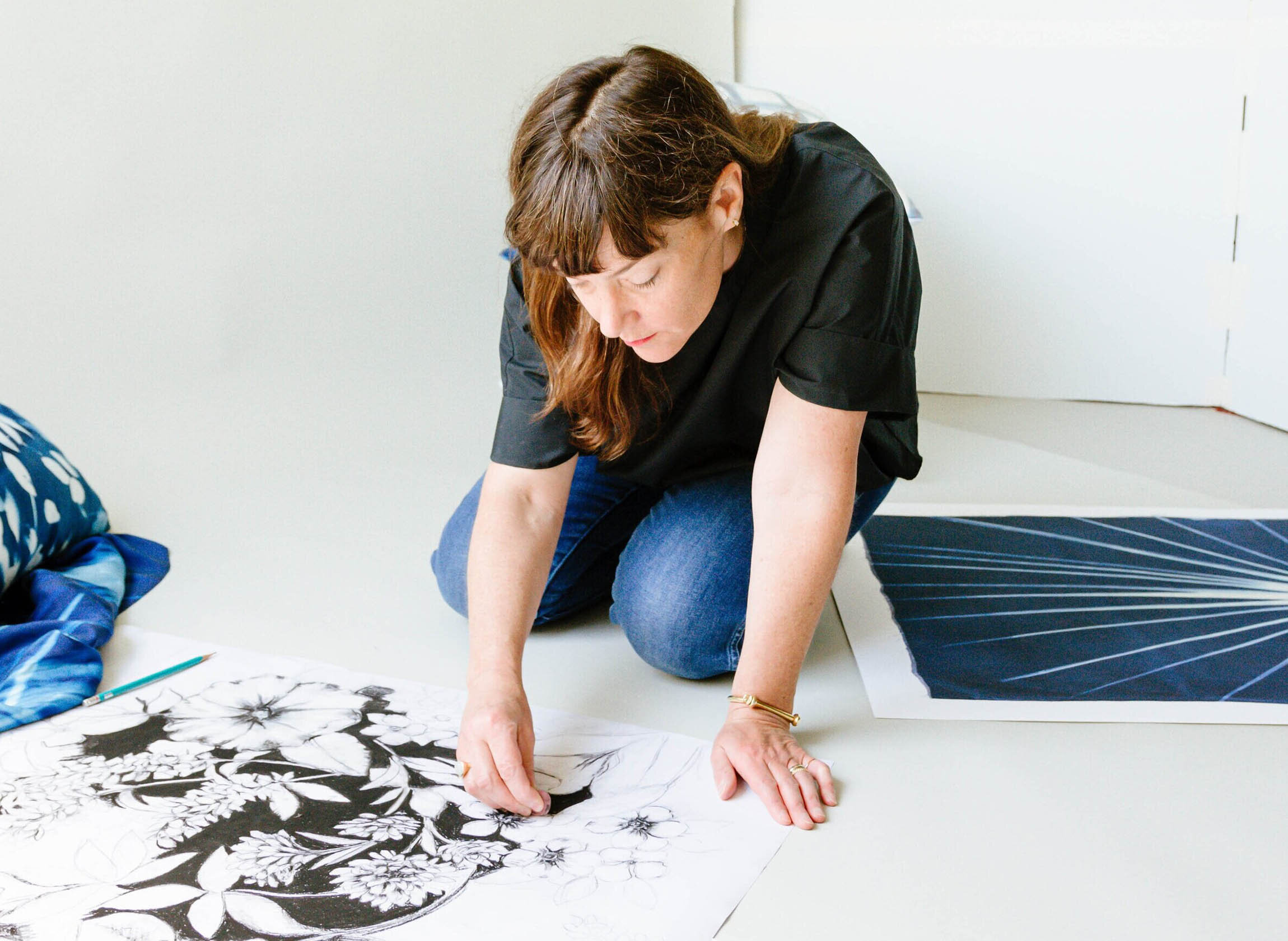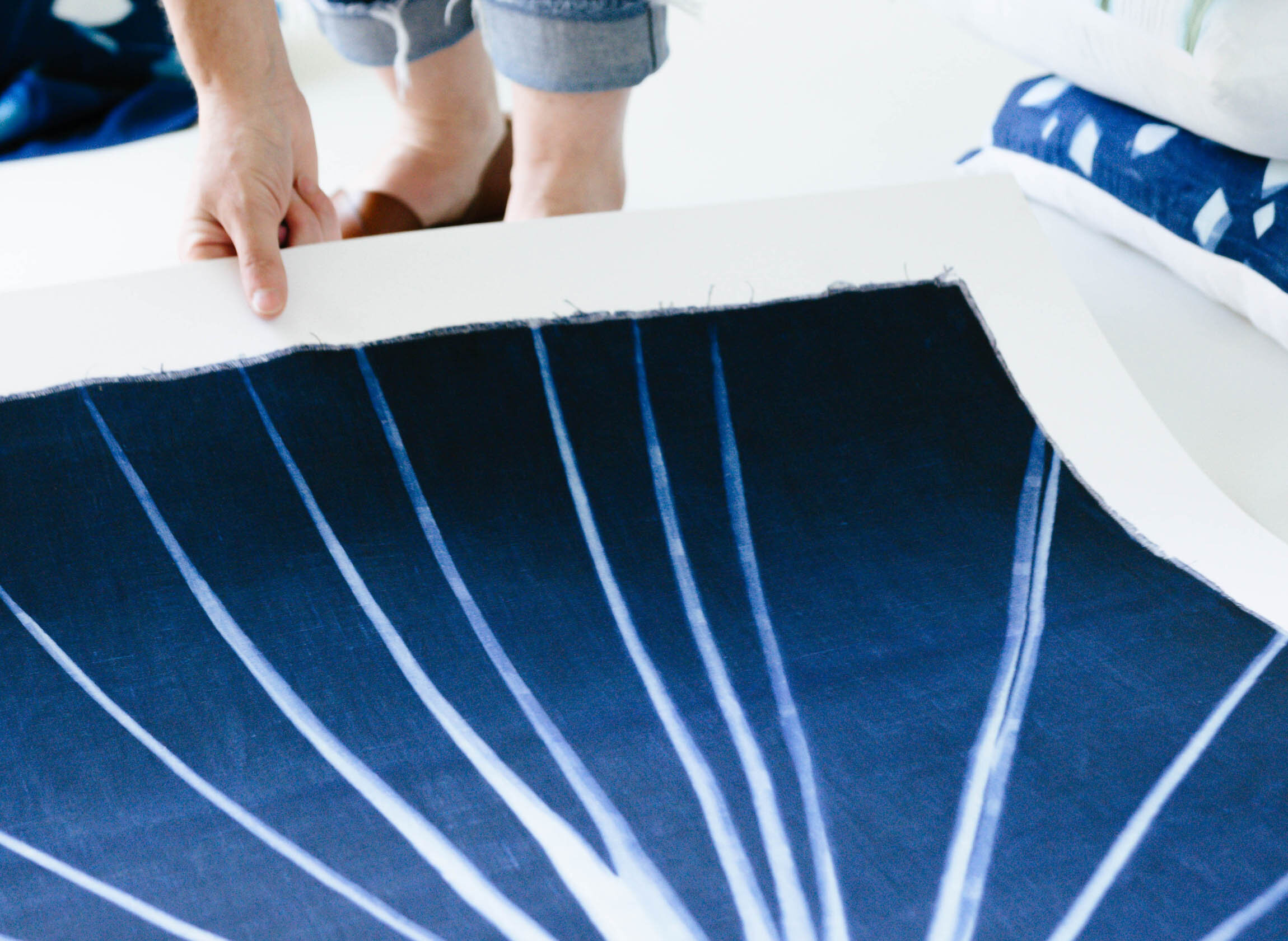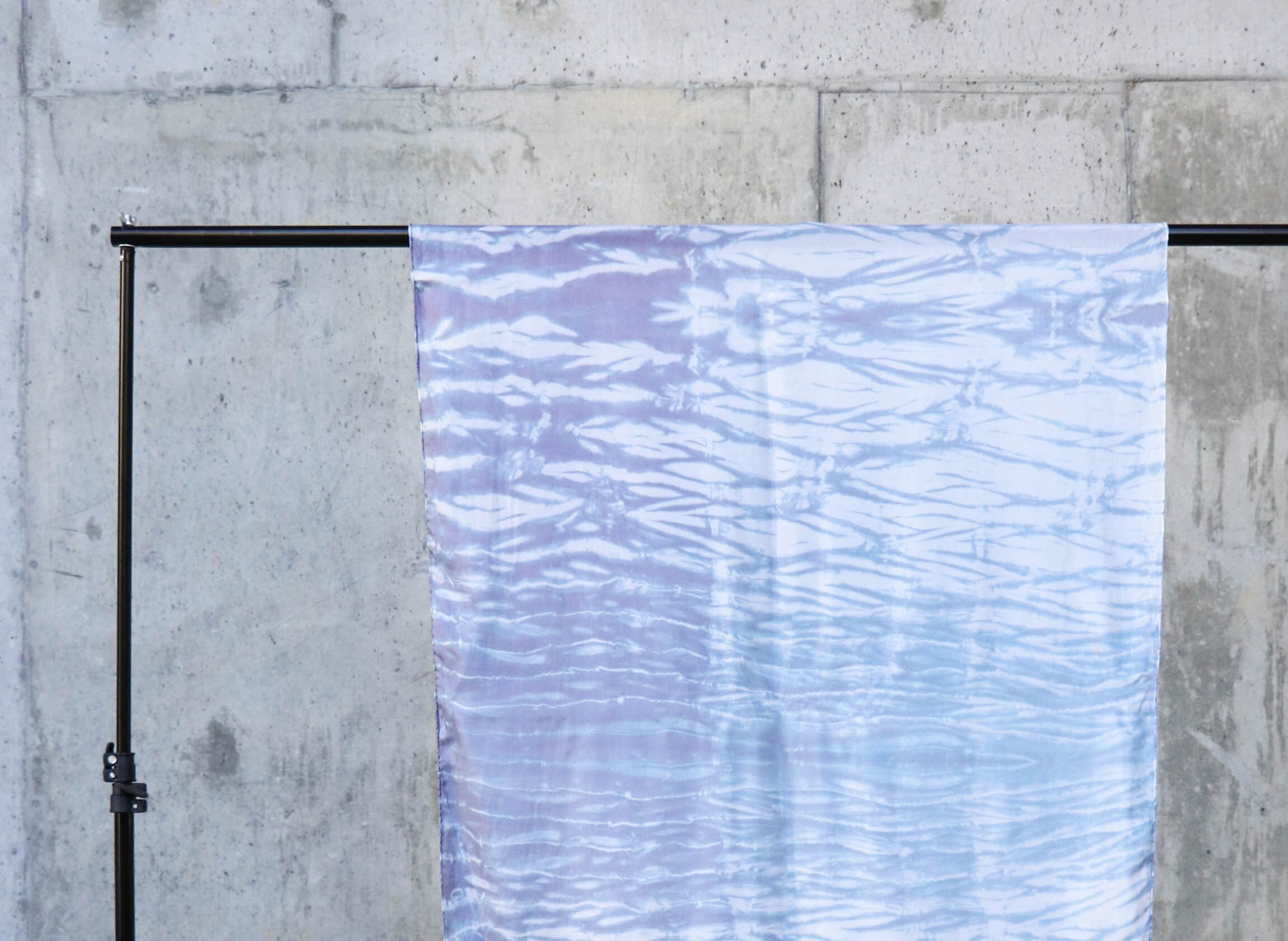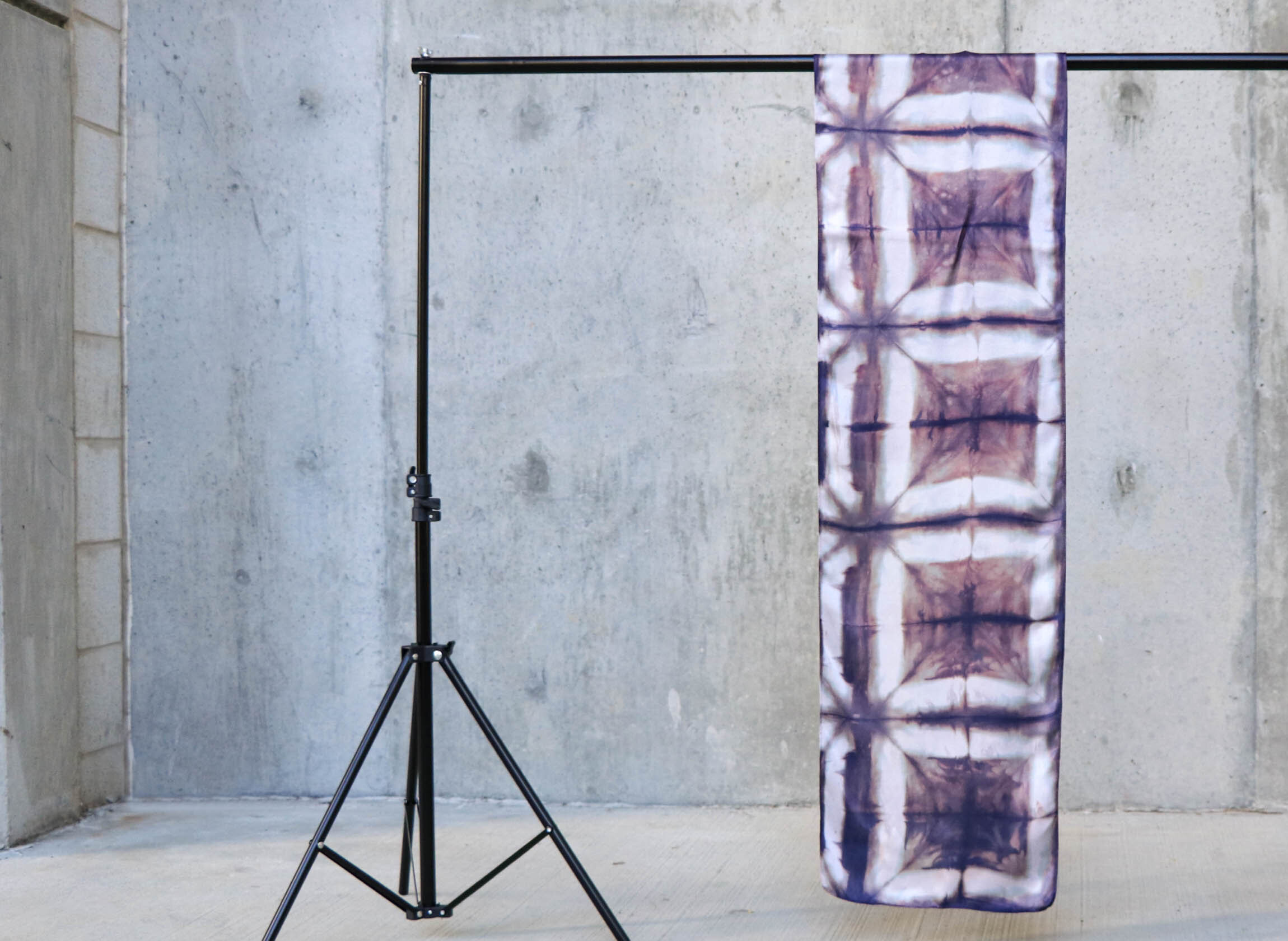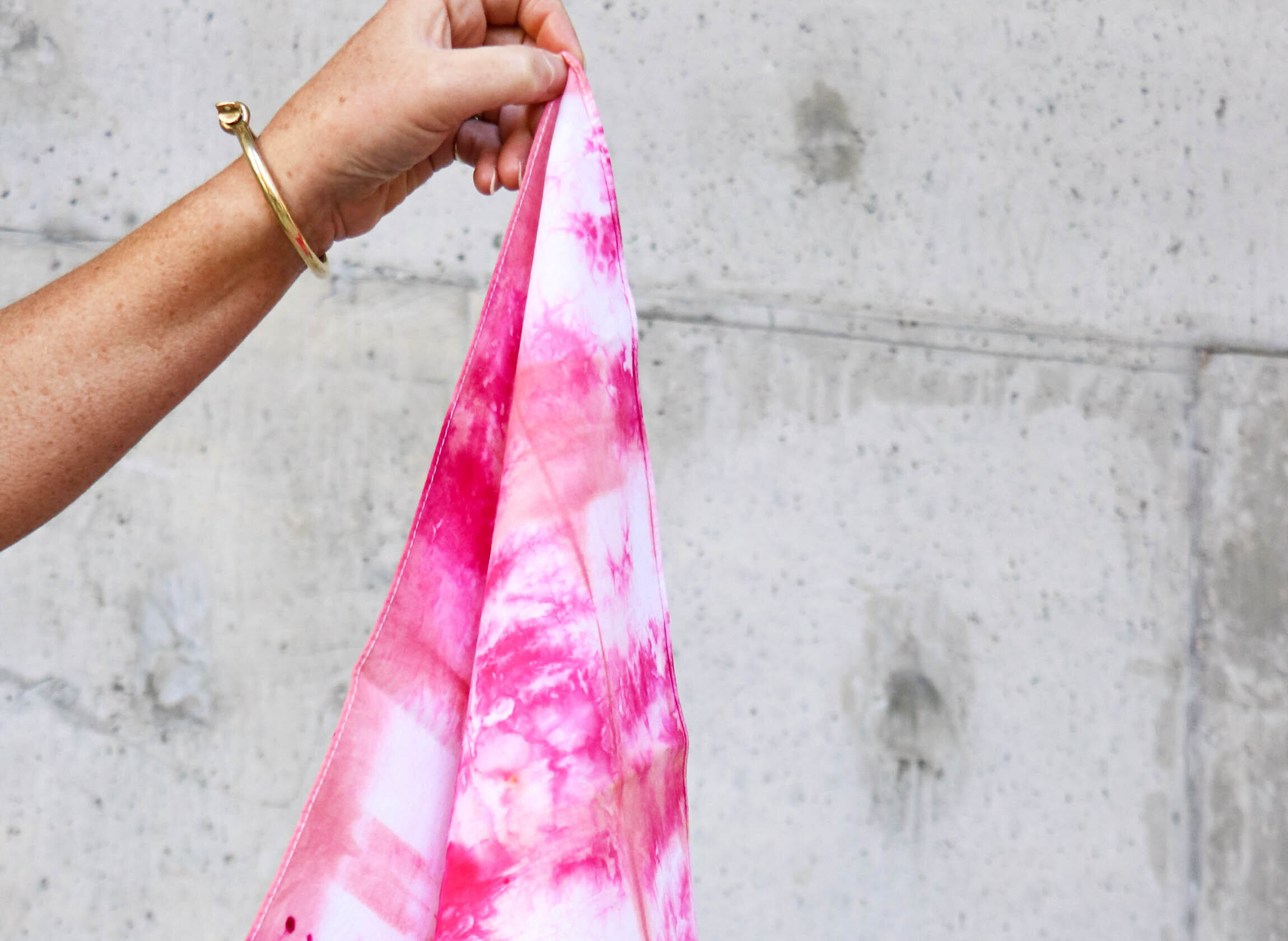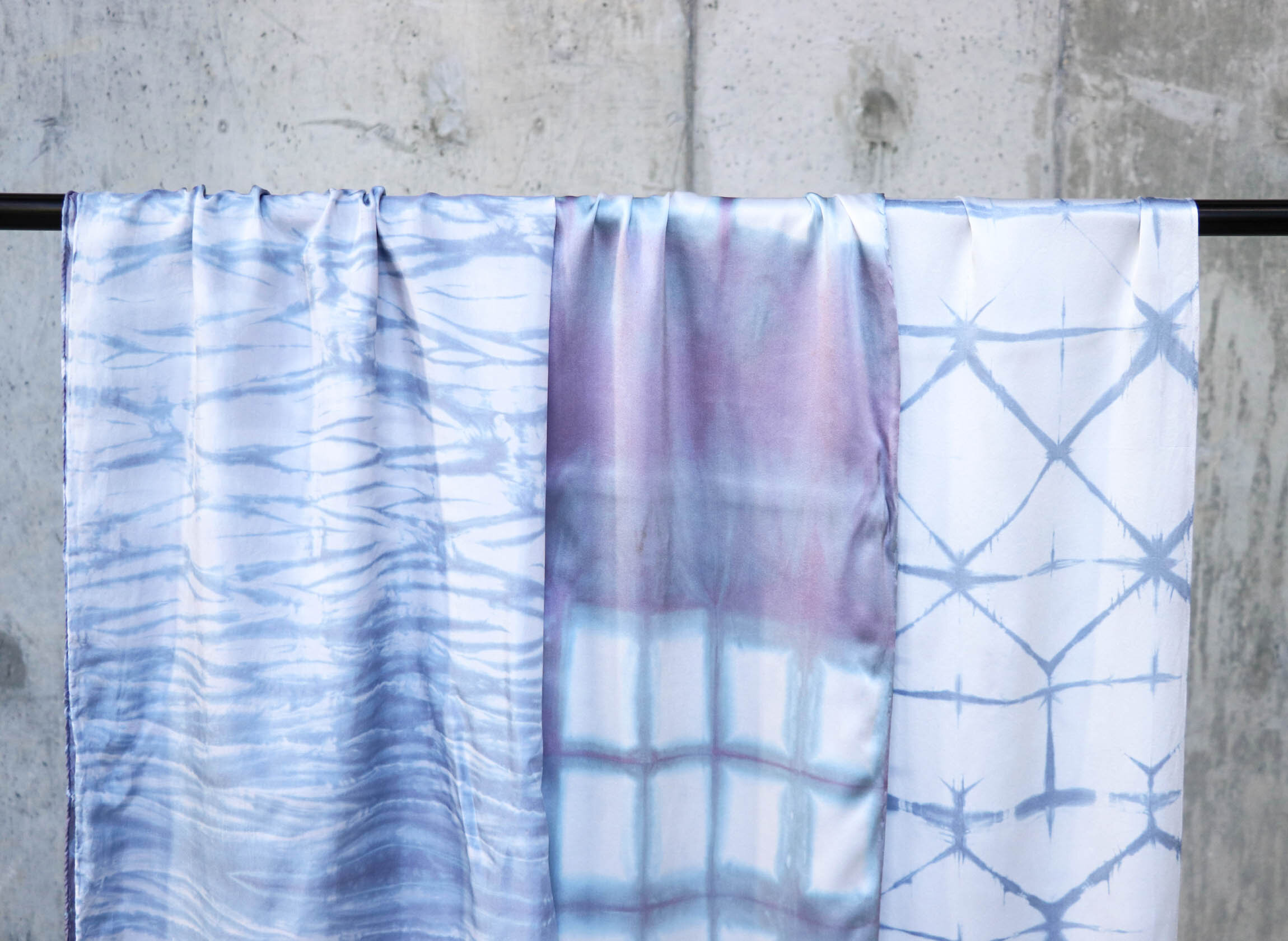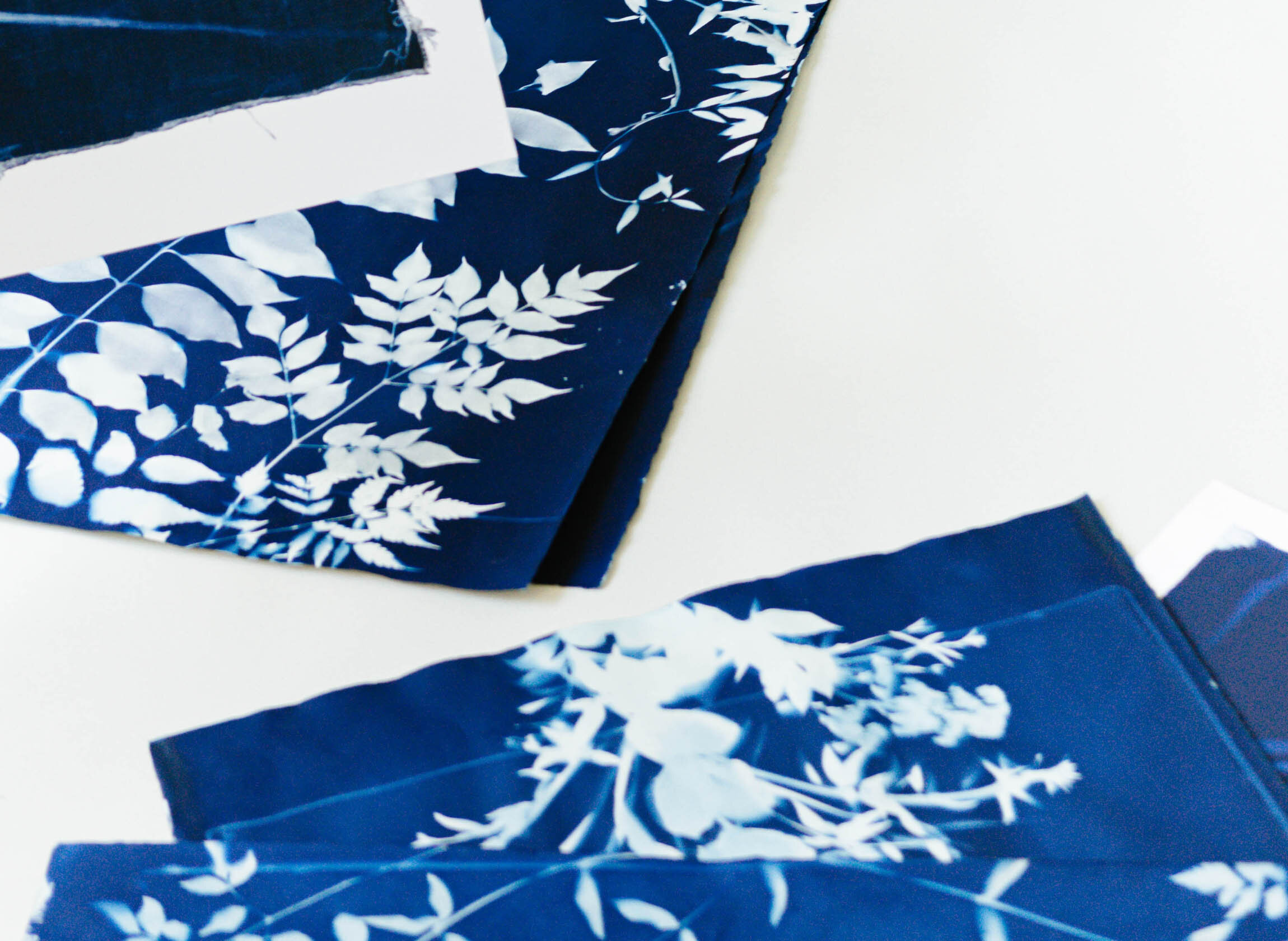From the Studio, With Love
Each of Erica Gimson’s pieces combine print and pattern with form and color to create traditional designs with a modern twist. Using ancient Japanese hand-dyeing techniques, Erica produces sustainable, one-of-a-kind textiles that are authentic, artful and enduring.
My passion for textiles, pattern design and color have always inspired me to create.
Erica takes a multi-disciplinary approach to her designs. Some of the techniques used to create the works you see here include painting, hand-dyeing, screen printing, collage, cyanotype and drawing.
